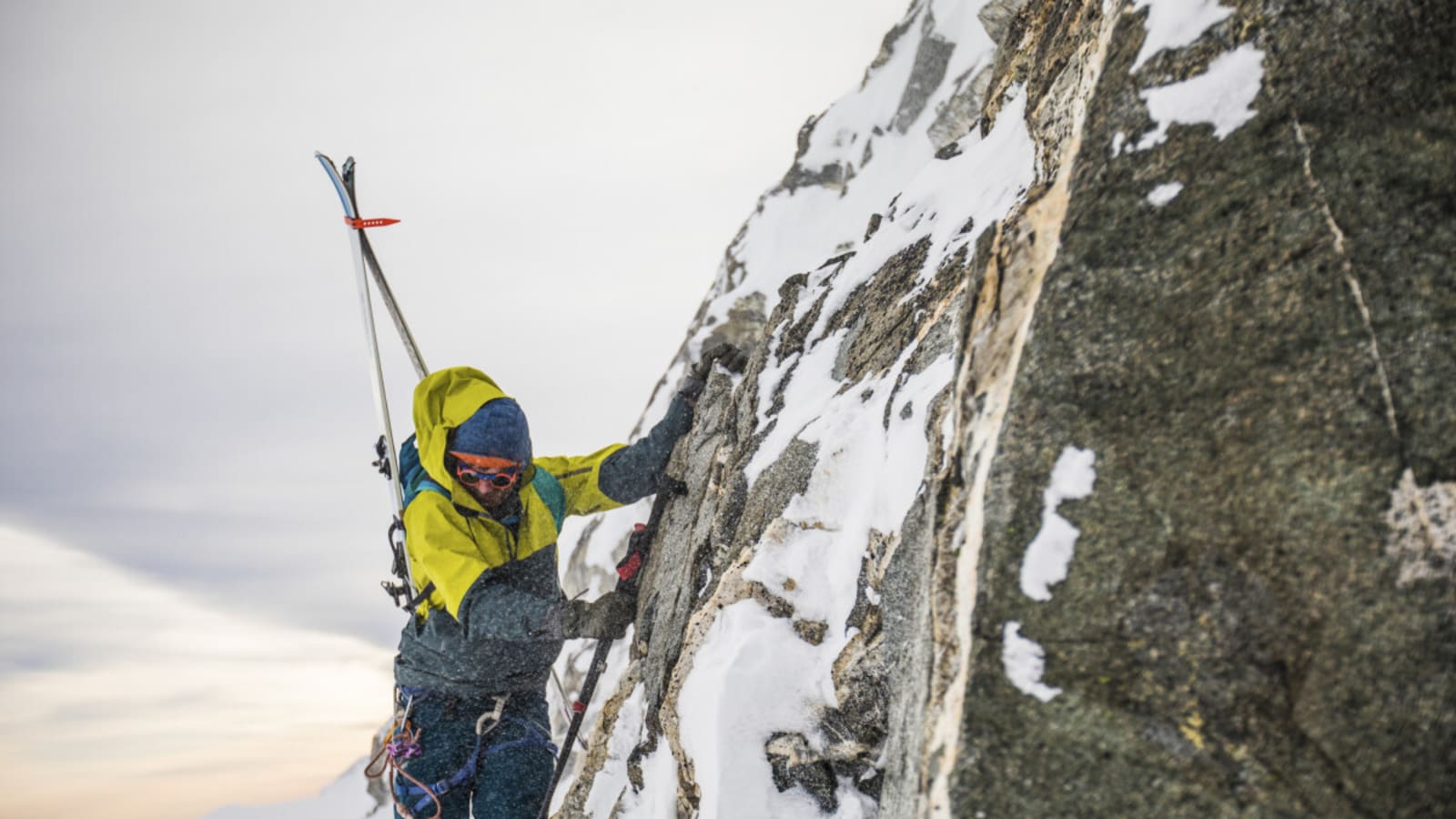
Skiing in the backcountry can look a number of different ways. Anything from skiing out a gate at a resort for a quick backcountry lap to a short ski tour for some low-angle pow turns an all-day mission for a specific line can constitute backcountry skiing.
But at what point does backcountry skiing turn into mountaineering? Or maybe the question is when should mountaineering start involving skiing? Here's a breakdown of what exactly constitutes ski mountaineering, what you need for it, and a few places every ski mountaineer should check out.
Want to keep up with the best stories and photos in skiing? Subscribe to the new Powder To The People newsletter for weekly updates.
What Is Ski Mountaineering?
Ski mountaineering is effectively the most extreme version of backcountry ski touring that involves skills beyond the basics of ski touring to travel through terrain. Picture this: you're headed to ski a big line in the mountains. You can skin most of the way to the face, but to get to the top of the line and actually drop in, you have to climb a section of rock, mixed ice and rock, or do a rappel to get into (or out of) the line. This is where backcountry skiing would turn to ski mountaineering.
Ski mountaineering often takes place on slopes steeper than 45 degrees or exposed slopes where the risk of slipping or falling is much higher and more consequential. At least basic mountaineering and climbing skills are required to get to the intended ski line alongside solid foundational backcountry ski knowledge like understanding snowpack, how to travel safely in avalanche terrain, and avalanche rescue. Things like rope work, belaying, climbing, crevasse rescue and self-arresting are all examples of these highly important skills.
What Is Skimo?
There is also a discipline of ski racing called Skimo, technically short for "ski mountaineering," but that's a different can of worms involving lots of spandex and running uphill that we're not going to get into here.
What Gear Do You Need for Ski Mountaineering?
The gear you need for a ski mountaineering mission will vary depending on your objective. At a baseline, you'll need all the equipment just for a ski tour: backcountry skis and bindings, skins, a beacon, probe, shovel, layers, food, water, etc. While a good backcountry setup goes a long way to truly get into ski mountaineering, investing in ultralight and backcountry-specific ski gear is well worth it.
While you can get away with a short tour in a boot without walking more or a hybrid binding, for an all-day walk in the mountains and doing some climbing, having boots with grippy soles and walk mode are essential. An ultralight ski and binding can save you a lot of weight and energy. A lighter, ski mountaineering specific helmet can also be a good investment given you might be wearing it for a lot more than just the descent.
Again, depending on your objective, you might need crampons, ski crampons, and ice axes as well. Having a good understanding of how to use these and practice with them before you're out in the mountains is a good idea so you're not struggling with your gear in a crucial moment. Many ski mountaineering lines also involve a rappel or spots where it's smart to rope up, meaning you'll need a rope, harness, and all the hardware associated with climbing, belaying and rappelling, which is an extensive list of its own. With all the extra gear you'll likely carry on a ski mountaineering mission, it's not a bad idea to have a larger, ski mountaineering specific backpack as well.
Because ski mountaineering missions have the potential to be a lot longer and more committing, its also not a bad idea to carry an emergency bivy, satellite communication device and headlamp if you don't already carry those in the backcountry, and more food and water than you think you'll need.
What Are the Best Places To Go Ski Mountaineering?
Hypothetically, anywhere there's big mountain backcountry skiing, there's ski mountaineering to be done, but certain areas are hot spots for famous ski mountaineering lines. Those who love a little extra spice and exposure with their backcountry days flock to them. Roger's Pass, British Columbia, Colorado's San Juan mountains, the Wasatch range in Utah, and California's High Sierras are all hotspots for ski mountaineering in North America.
Grand Teton National Park is also chock full of ski mountaineering lines. The Grand Teton itself is a classic ski mountaineering line, as are dozens of other lines in the park like the Skillet, Apocalypse Couloir, the Amor A'Vida, East Face of the Middle Teton, and many, many more.
In Europe, France is perhaps best known for being a ski mountaineer's paradise. In Chamonix, you can ski a lifetime's worth of descents on the Mont Blanc, Aiguille du Midi, and other peaks and top it off with some tasty French pastries at the end of your day. La Grave is another popular ski mountaineering spot in France. There's also excellent ski mountaineering to be found in Zermatt, Switzerland.
Ski mountaineering is also one of the best ways to experience some of the tallest peaks and volcano summits in North America, such as Denali, Mt. Rainier, Mt. Hood, Mt. Shasta, Mt. Adams, Mt. Jefferson and the Three Sisters.
More must-reads:
- Caitlin Clark shares candid injury update at Team USA camp
- Fernando Mendoza had powerful closing message after winning Heisman Trophy
- The '2025-26 bowl game host cities' quiz
Breaking News
Trending News
Customize Your Newsletter
 +
+
Get the latest news and rumors, customized to your favorite sports and teams. Emailed daily. Always free!








